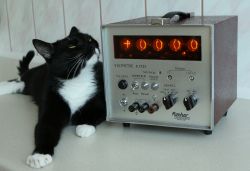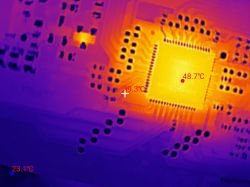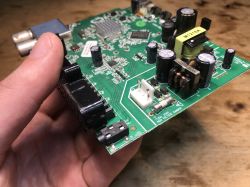FAQ
TL;DR: DigiSpark offers 8 kB flash (2 kB bootloader) in a 26 × 18 mm board [Elektroda, TechEkspert, post #17330915]; "After replacing the Zener diodes the problem is gone" [Elektroda, RigelInOrion, post #17331317] This FAQ streamlines drivers, Windows 10, programming tricks, and troubleshooting.
Why it matters: A two-euro board can emulate USB HID, sense analog signals and run in minutes—if you know the quirks.
Quick Facts
• MCU: ATtiny85, 8 kB flash, 512 B SRAM, 6 GPIO/PWM/ADC lines [Elektroda, TechEkspert, post #17330915]
• USB: V-USB software stack, low-speed 1.5 Mbit/s, shared on P3/P4 [*V-USB Factsheet*]
• Power: On-board 5 V LDO; analog input range 0–4.75 V on P2 [Elektroda, TechEkspert, post #17330915]
• Driver package: Digistump.Drivers v1.6.7 for Win7-10 [Digistump, 2019]
• Street price: US $1.8–2.5 per clone module [AliExpress listing, 2023]
How do I add DigiSpark support to the Arduino IDE?
- Open File → Preferences → Additional Board URLs and paste http://digistump.com/package_digistump_index.json 2. Go to Tools → Board → Boards Manager, search “Digistump AVR Boards” and install. 3. Pick Tools → Board → Digispark (16.5 MHz) [Elektroda, TechEkspert, post #17330915]
What is the correct upload procedure?
Compile first, click Upload, then plug the board in when the IDE shows “Plug in device”. The bootloader listens for ~5 s, then runs the previous sketch, so timing matters [Elektroda, TechEkspert, post #17330915]
Does DigiSpark run under Windows 10, and how do I install drivers?
Yes. Unzip Digistump.Drivers 1.6.7, right-click DPInst64.exe (or 32-bit) and install. Plug the board only after installation; Windows then enumerates it as “Digispark Bootloader” [Digistump, 2019].
My PC doesn’t detect the board—what’s the fix?
Replace the two 3 V 6 Zener diodes with 3 V 3 parts; over-3.6 V on USB D+⁄D– prevents enumeration [Elektroda, RigelInOrion, post #17331317] "Voltage on the USB lines must not exceed 3.6 V" [Elektroda, Anonymous, post #17332865]
Can I program the board while it is wired into my system?
Yes. Ensure the external 5 V rail is isolated with a diode so USB can power the module during upload, and keep P3/P4 free of other loads during the short boot phase [Elektroda, pier, post #18429878]
What are typical applications of a Digispark?
Common uses include USB Rubber-Ducky-style keyboards, capacitive touch buttons, WS2812 LED drivers, miniature oscilloscope (DigiScope example), water-level sensors and RS-485 basement telemetry [Elektroda, TechEkspert, #17330915; oskar777, #17331218].
How do I read an analog signal on P2?
Load the Arduino example File → Examples → DigisparkUSB → DigiScope. Feed 0–4.75 V into P2; view live data with digiscope.exe from the DigisparkExamplePrograms repo [Elektroda, TechEkspert, post #17330915]
Can the board act as a USB keyboard or mouse?
Yes. The V-USB stack lets sketches enumerate as HID. Example: emulate a keyboard to send shortcuts; no driver needed on host PCs because HID is class-compliant [Elektroda, RigelInOrion, post #17332863]
Are there alternatives with more pins or on-chip USB?
Microchip’s ATtiny416-XNano adds on-board debugger, UART-USB bridge and 18 GPIOs [Elektroda, leonow32, post #17332684] For 32-bit, an STM32F103 “Blue Pill” gives 37 GPIOs and 64 kB flash for ~US $1.8 [Elektroda, Anonymous, post #17332865]
How can I flash firmware without the bootloader?
Use a standard 6-pin ISP header: connect MOSI, MISO, SCK, RESET, VCC, GND to a USBasp or AVR-ISP MKII. This frees the 2 kB bootloader space, giving the full 8 kB and removes the 5-second start delay [Elektroda, RigelInOrion, post #17332863]
What’s the recommended way to place remote sensors like in a cellar?
Add an RS-485 transceiver (e.g., MAX485) on P0/P1. Two-wire twisted pair lets you span 1200 m while rejecting noise—ideal between basement sensors and upstairs controller [Elektroda, TechEkspert, post #17332528]
What limits should I know about the software USB implementation?
V-USB is low-speed only, maximum 1.5 Mbit/s and one transaction per USB frame. Isochronous and high-bandwidth endpoints are unavailable. CPU spends ~10 % time in USB interrupt service at 16.5 MHz, reducing real-time performance [V-USB Factsheet].






